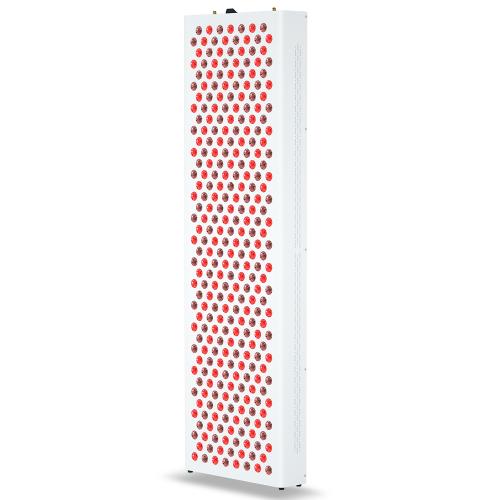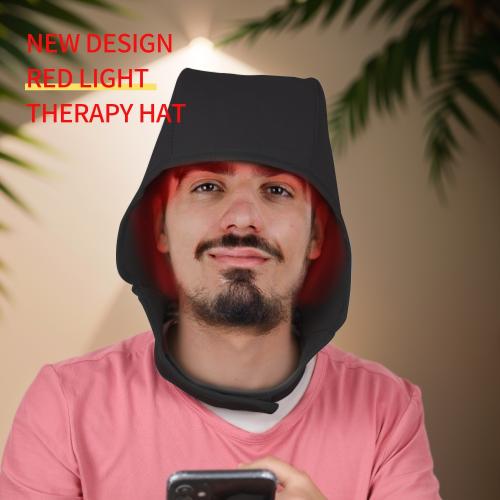What does Mayo Clinic say about red light therapy?

Red light therapy, also known as photobiomodulation or low-level laser therapy, has garnered significant attention in recent years for its potential health benefits. As a professional knowledge blogger, it is crucial to delve into the scientific insights and expert opinions, such as those from reputable institutions like the Mayo Clinic, to provide an accurate and comprehensive understanding of this therapy.
Red light therapy involves exposing the body to low levels of red or near-infrared light, which is thought to penetrate the skin to affect cells and tissues. The therapy is touted for its ability to enhance cellular function, promote healing, and reduce inflammation. The Mayo Clinic, a leading authority in medical research and practice, offers insights into the efficacy and applications of red light therapy.
Firstly, it's important to understand the underlying mechanisms of red light therapy. The therapy works by stimulating mitochondria, the powerhouse of cells, which increases the production of adenosine triphosphate (ATP). ATP is essential for cellular energy and function, and its increased production can lead to enhanced cell repair and regeneration. This mechanism is why red light therapy is often associated with improved skin health, reduced pain, and accelerated healing.
The Mayo Clinic acknowledges several potential applications of red light therapy. One of the most common uses is in dermatology, where it is employed to treat skin conditions such as acne, psoriasis, and eczema. The therapy is believed to reduce inflammation and promote collagen production, leading to healthier and more resilient skin. Furthermore, red light therapy is used to improve wound healing and reduce the appearance of scars.
Pain management is another area where red light therapy is gaining traction. The Mayo Clinic notes that the therapy can be beneficial for individuals suffering from chronic pain conditions, such as arthritis and fibromyalgia. By reducing inflammation and promoting tissue repair, red light therapy may help alleviate pain and improve joint function.
Athletes and fitness enthusiasts are also turning to red light therapy for performance enhancement and recovery. The therapy is said to improve muscle recovery, reduce soreness, and enhance endurance. By supporting cellular repair and reducing oxidative stress, red light therapy may help athletes recover faster and perform better.
Despite these promising applications, it is crucial to approach red light therapy with a critical eye. The Mayo Clinic emphasizes the importance of scientific validation and cautions against over-reliance on anecdotal evidence. While there is growing research supporting the benefits of red light therapy, more rigorous studies are needed to establish definitive efficacy and safety profiles.
One of the challenges in evaluating red light therapy is the variability in treatment protocols. Factors such as wavelength, intensity, and duration of exposure can significantly impact the therapy's effectiveness. The Mayo Clinic advises individuals to seek professional guidance to ensure they receive appropriate and effective treatment.
Moreover, red light therapy is not a one-size-fits-all solution. The Mayo Clinic highlights that individual responses to the therapy can vary, and it may not be suitable for everyone. Factors such as skin type, underlying health conditions, and specific treatment goals should be considered when determining the appropriateness of red light therapy.
Safety is another important consideration. While red light therapy is generally considered safe, the Mayo Clinic advises caution, particularly with devices used at home. It is essential to follow manufacturer guidelines and avoid excessive exposure, which can lead to adverse effects such as skin burns or eye damage. Consulting healthcare professionals before starting red light therapy is recommended to ensure safety and efficacy.
In conclusion, red light therapy presents a promising avenue for enhancing health and wellness. The Mayo Clinic recognizes its potential benefits in dermatology, pain management, and athletic performance, among other areas. However, it is essential to approach the therapy with a scientific mindset, acknowledging the need for further research and professional guidance. By understanding the mechanisms, applications, and safety considerations, individuals can make informed decisions about incorporating red light therapy into their health regimen.
Ultimately, red light therapy is an exciting field with the potential to revolutionize various aspects of healthcare. As research continues to unfold, it is crucial to stay informed and critically evaluate new findings. By doing so, individuals can harness the benefits of red light therapy while ensuring safety and efficacy in their pursuit of improved health and wellness.

 Afrikaans
Afrikaans Čeština
Čeština Dansk
Dansk Deutsch
Deutsch Español
Español Francais
Francais Italiano
Italiano Magyar
Magyar Nederlands
Nederlands Norsk
Norsk Polski
Polski Português
Português Română
Română Slovák
Slovák Suomi
Suomi Svenska
Svenska Tiếng Việt
Tiếng Việt Türk dili
Türk dili Ελλάδα
Ελλάδα Русский
Русский اللغة العربية
اللغة العربية แบบไทย
แบบไทย 中文繁體
中文繁體 日本語
日本語 한국인
한국인







